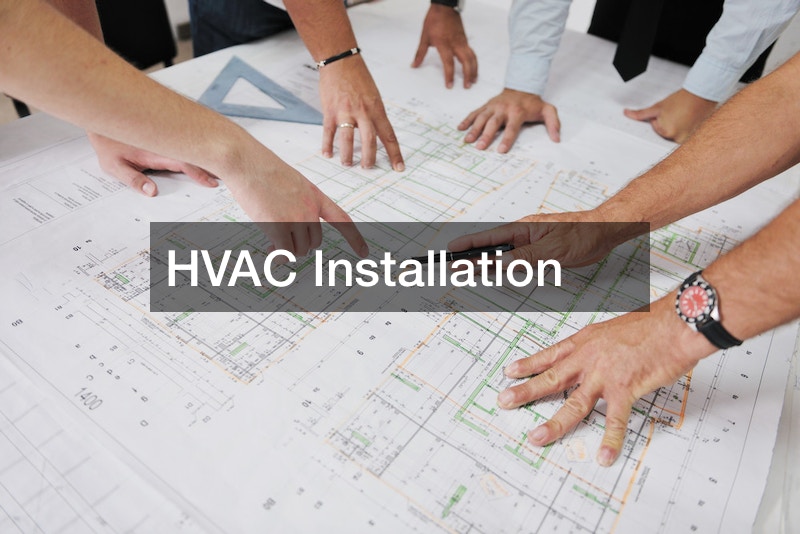How to Go About Rehabbing a Commercial Property
Rehabbing a commercial property can be a highly rewarding endeavor, offering opportunities to revitalize a space, increase its value, and attract quality tenants or buyers. However, the process is often complex, involving careful planning, strategic decision-making, and diligent execution. From assessing the current state of the property to navigating permits and managing construction, each step requires attention to detail and a clear understanding of the commercial real estate market. Beyond structural renovations, modern rehabs often integrate elements such as commercial pest control, interior design updates, and sustainable landscaping to enhance both functionality and appeal. This article explores the critical aspects of rehabbing a commercial property, providing insights into planning, financing, construction, and marketing strategies that can lead to a successful outcome.
What Are the Initial Steps in Planning a Commercial Property Rehab?

Understanding the Scope of the Project
Before any work begins, it’s crucial to define the scope of your rehab project. This involves identifying specific goals, such as increasing usable square footage, modernizing outdated facilities, or enhancing aesthetic appeal. At this stage, considerations like metal siding replacements, commercial glass door repair, or updating interior design features can be incorporated into the project plan. Understanding the scope helps establish realistic expectations and ensures all team members are aligned on the objectives.
Conducting a Market Analysis
A thorough market analysis provides insight into the demand for commercial properties in your area. Understanding local market trends, tenant preferences, and competitive properties helps determine which improvements will yield the highest return on investment. For example, properties with high-quality exterior finishes, such as modern metal siding, and attractive landscaping by a skilled local landscaper often command higher rents or sale prices. Market analysis also informs decisions regarding the types of tenants or businesses that are likely to be interested in your property and the rental rates or sale prices that are feasible.
Setting a Realistic Budget
Budgeting is a foundational step in any rehab project. Begin by estimating costs for demolition, construction, permits, materials, labor, and contingencies. Costs for additional services, such as commercial pest control, dumpster rental, or professional painting company work, should also be included. Setting a realistic budget requires careful research and consultation with contractors and financial experts. A well-defined budget balances financial prudence with the project’s goals while accounting for all the necessary services that ensure a smooth and safe rehab.
Building a Skilled Team
A successful commercial rehab relies on a team of experienced professionals, including architects, contractors, engineers, and project managers. Including specialists like a local electrician, local security services consultant, and a reputable painting company ensures all aspects of the property meet modern standards. Each team member brings specialized knowledge that ensures the project runs smoothly, meets regulatory standards, and adheres to design goals. Skilled professionals reduce risks and improve the overall quality of the finished property.
Creating a Project Timeline
Developing a comprehensive timeline sets expectations for project milestones and completion. Timelines should account for permitting, demolition, construction, inspections, and final finishes. Coordinating with services such as dumpster rental for debris removal or pest control services for preventive treatment ensures the timeline accounts for all critical tasks. A clear timeline helps coordinate different trades, avoids scheduling conflicts, and facilitates communication among team members.
How to Assess the Current Condition of the Property?
Conducting a Thorough Inspection
A professional inspection identifies areas that require immediate attention, such as structural weaknesses, water damage, or electrical hazards. Inspections provide a clear understanding of the work required, including whether commercial glass door repair, metal siding replacement, or interior design updates are necessary. Thorough inspections help prevent surprises that could derail the project or increase costs, allowing the rehab team to prioritize critical improvements.
Identifying Structural Issues
Structural integrity is a key consideration in any rehab project. Examining the foundation, load-bearing walls, roof, and support systems reveals potential weaknesses or damage. Structural issues should be addressed first to ensure the long-term safety of the property. This stage may involve working with a local electrician to ensure that wiring meets code and coordinating with a painting company to prepare interior surfaces once repairs are complete.
Evaluating the Current Layout and Design
Analyzing the property’s layout helps determine whether it meets modern commercial needs. Outdated floor plans may require redesigning interior spaces or updating interiors with professional interior design services. Improvements in layout and design can improve workflow, enhance accessibility, and create spaces that appeal to tenants and customers alike. Even elements like strategic landscaping by a local landscaper can enhance curb appeal and tenant satisfaction.
Checking for Code Compliance and Permits
Commercial properties must comply with local building codes, fire regulations, and safety standards. Reviewing previous permits and code compliance records ensures that the property meets legal requirements. Local security services and electrical upgrades should also comply with modern standards. Identifying areas of noncompliance early in the project avoids costly fines or delays and allows the rehab team to plan upgrades accordingly.
Analyzing Utilities and Infrastructure
Utilities, including HVAC systems, plumbing, electrical wiring, and security systems, are crucial to property functionality. Evaluating the age, capacity, and efficiency of these systems helps determine necessary upgrades. Modern infrastructure may include enhanced security features, energy-efficient lighting, or smart technology integration. Upgrading these systems ensures efficiency, safety, and tenant satisfaction while reducing maintenance costs over time.
What Financing Options Are Available for Commercial Property Rehab?

Traditional Loans and Mortgages
Commercial mortgages from banks and financial institutions are a common source of funding. These loans typically offer competitive interest rates and structured repayment plans. Lenders require detailed project plans, budgets, and financial statements. Including projected costs for services such as commercial pest control, metal siding installation, and interior design enhancements strengthens loan applications by demonstrating thorough planning.
Private and Hard Money Lenders
Private lenders and hard money loans provide alternative financing for projects that may not qualify for traditional bank loans. These options often have higher interest rates and shorter terms but allow for quick access to funds. Hard money loans are particularly useful when immediate investments in commercial glass door repair or painting company services are required to prepare a property for occupancy.
Government and Tax Incentives
Federal, state, and local programs may provide tax credits, grants, or low-interest loans aimed at revitalizing commercial properties, improving energy efficiency, or supporting economic development. Incentives for sustainable upgrades, including metal siding with energy-efficient coatings, can significantly reduce project costs. Exploring these programs ensures that financial resources are maximized while adhering to local guidelines.
Crowdfunding and Investors
Some rehab projects can be financed through private investors or crowdfunding platforms. Raising capital from multiple sources spreads financial risk and allows for investment in high-quality finishes, interior design enhancements, and landscaping improvements. Investor-backed funding can support commercial glass door repair, HVAC upgrades, and security system installations, ensuring the property is competitive in the market.
Financial Risk Management
Proper financial planning includes assessing potential risks and developing strategies to mitigate them. Contingency funds, insurance coverage, and conservative revenue projections help protect the project from unforeseen challenges. Risk management also involves planning for unexpected costs associated with commercial pest control or dumpster rental services, ensuring the project remains financially viable.
How to Design a Commercial Space That Meets Modern Needs?
Incorporating Universal Design Principles
Universal design ensures that commercial spaces are accessible to all users. Features like ramps, wide doorways, and accessible restrooms create inclusive environments. Interior design choices that consider universal accessibility, combined with functional layout improvements, attract a wider range of tenants and customers while increasing overall property value.
Maximizing Energy Efficiency
Energy-efficient upgrades reduce operational costs and support sustainability goals. High-efficiency HVAC systems, LED lighting, and energy-efficient windows lower utility expenses. Selecting metal siding with reflective coatings or energy-efficient insulation can further enhance energy savings. Tenants increasingly value properties that prioritize sustainability and cost-effective operation.
Creating Flexible and Modular Spaces
Modern commercial properties benefit from flexible layouts that can accommodate diverse tenant needs. Movable partitions, modular furniture, and adaptable workspaces increase functionality. Flexible designs also make the property more attractive to potential tenants, providing options for office spaces, retail areas, or service-oriented businesses.
Integrating Technology and Smart Systems
Technology integration enhances building efficiency and tenant experience. Smart climate control, automated security, and remote monitoring systems improve operations. Collaborating with a local electrician to ensure seamless technology installation is critical. Security upgrades, integrated with local security services, provide tenants with peace of mind and improve the property’s marketability.
Enhancing Aesthetic Appeal
A visually appealing property attracts tenants and increases perceived value. Professional interior design services, painting company work, and exterior improvements such as landscaping by a local landscaper can transform a commercial property. Exterior features like metal siding and well-maintained commercial glass doors contribute to a modern, professional appearance.
How to Obtain the Necessary Permits and Comply with Zoning Laws?

Understanding Local Zoning Regulations
Zoning laws dictate land use, building heights, and occupancy limits. Compliance ensures the property meets legal requirements and avoids fines. Projects involving exterior updates, such as metal siding or commercial glass door repair, must adhere to these regulations to ensure approval.
Navigating the Permit Application Process
Obtaining permits requires submitting detailed plans, meeting code requirements, and paying fees. Including all necessary improvements, such as commercial pest control measures or security system upgrades, ensures permits reflect the complete scope of work. Early preparation facilitates smoother approvals and prevents delays.
Engaging with Local Authorities
Establishing relationships with planning departments, inspectors, and zoning boards can simplify the permit process. Clear communication regarding project components, including dumpster rental plans for debris removal or proposed landscaping changes, demonstrates professionalism and ensures compliance.
Ensuring Environmental Compliance
Environmental assessments protect public health and ensure proper handling of hazardous materials. Pest control services, waste management, and safe demolition practices help maintain environmental standards. Attention to environmental regulations also supports sustainability goals and property reputation.
Keeping Track of Regulatory Changes
Monitoring updates to zoning and building codes ensures ongoing compliance. Staying informed allows the property to meet current requirements while avoiding retroactive penalties. This proactive approach includes staying current on environmental, safety, and accessibility regulations.
How to Handle Demolition and Asbestos Removal Safely?
Assessing Demolition Needs
Determining whether full or partial demolition is required prevents unnecessary expense and disruption. Identifying areas where commercial glass door repair or metal siding replacement will occur helps clarify demolition plans.
Hiring Licensed Demolition Contractors
Professional contractors bring expertise, equipment, and safety protocols. Ensuring contractors are licensed reduces risk during hazardous material removal and demolition. Coordination with dumpster rental services ensures debris is efficiently removed from the site.
Identifying and Handling Hazardous Materials
Older buildings may contain asbestos, lead paint, or mold. Certified professionals remove and dispose of these materials safely. Integrating pest control services during this stage can prevent infestations in vulnerable, disturbed areas.
Ensuring Site Safety Protocols
Maintaining a secure demolition site protects workers and the surrounding community. Implementing proper signage, barriers, and personal protective equipment prevents accidents and ensures regulatory compliance.
Managing Waste and Disposal
Efficient waste management includes separating, recycling, and disposing of materials responsibly. Utilizing dumpster rental services facilitates timely debris removal and supports environmental responsibility. Proper disposal practices also reduce project delays.
What Are the Key Considerations for Construction and Renovation?
Selecting Reliable Contractors
Reputable contractors are essential for construction quality. Engaging experienced teams ensures that work, from metal siding installation to interior design enhancements, meets expectations. Contractors who coordinate effectively with a painting company or local electrician contribute to a cohesive final product.
Managing Construction Timelines
Timely coordination of trades, including HVAC, plumbing, electrical, and pest control services, keeps the project on schedule. Efficient scheduling of dumpster rental pickups and landscaping work supports smooth workflow and minimizes delays.
Ensuring Quality Control
Regular inspections and adherence to construction standards ensure high-quality results. Monitoring workmanship on tasks such as commercial glass door repair, painting, or interior design integration preserves both aesthetic appeal and structural integrity.
Coordinating Between Trades
Construction involves multiple trades, including electrical, plumbing, HVAC, and exterior finishes. Coordination ensures seamless integration, reduces conflicts, and maintains efficiency. Local electricians, security services, and landscapers play crucial roles in harmonizing systems and finishes.
Contingency Planning
Even with thorough planning, unexpected challenges can arise. Contingency plans and reserve funds accommodate surprises, including additional pest control measures, unforeseen material costs, or scheduling delays. Planning ahead protects the project’s success.
How to Choose Materials and Finishes for Durability and Style?
Evaluating Material Options
Material selection balances functionality, aesthetics, and cost. Metal siding offers long-term durability and modern appearance, while professional painting company finishes enhance interiors. Interior design decisions, combined with sustainable landscaping elements, contribute to a cohesive property look.
Prioritizing Durability and Longevity
High-traffic commercial properties require durable materials. Metal siding, reinforced flooring, and high-quality finishes withstand wear and tear. These choices reduce maintenance costs and increase tenant satisfaction.
Balancing Cost with Quality
Investing in quality materials and services, such as commercial glass door repair, painting, and landscaping, ensures long-term value. Balancing cost and quality requires careful consideration of lifecycle expenses and maintenance needs.
Selecting Sustainable Options
Sustainable materials and environmentally responsible practices, including efficient HVAC systems and metal siding with reflective coatings, reduce operational costs and enhance marketability. Pest control services that use eco-friendly solutions also support sustainability goals.
Coordinating Colors and Textures
Coordinated design elements create visual harmony. Interior design services, painting company finishes, and landscaping by a local landscaper contribute to a cohesive aesthetic. Exterior metal siding and commercial glass door choices further reinforce the property’s professional appearance.
What Are the Best Practices for HVAC, Plumbing, and Electrical Systems?

Designing Efficient HVAC Systems
Efficient HVAC systems improve energy performance and tenant comfort. Regular maintenance and smart system integration ensure long-term operation. Collaboration with a local electrician ensures proper wiring and energy efficiency.
Upgrading Plumbing Infrastructure
Modern plumbing improves water efficiency, supports tenant needs, and minimizes maintenance issues. Upgrades should comply with code requirements and integrate seamlessly with other trades.
Ensuring Safe and Modern Electrical Installations
Electrical systems must meet safety standards. Working with a local electrician guarantees proper installation, code compliance, and integration with smart technology. Reliable electrical systems also support security upgrades provided by local security services.
Integrating Smart Technology
Smart building systems enhance energy management, security, and tenant convenience. Automated lighting, climate control, and monitoring systems improve operational efficiency and reduce long-term costs.
Maintenance Planning
Regular maintenance ensures the longevity of HVAC, plumbing, and electrical systems. Pest control services, landscaping maintenance, and routine inspections prevent long-term deterioration and protect the property’s value.
How to Stage and Market the Rehabilitated Property?
Creating a Compelling Marketing Plan
A strong marketing plan highlights the property’s unique features, including metal siding, modern interiors, and professional landscaping. Marketing materials should emphasize quality renovations and attention to detail, attracting high-quality tenants or buyers.
Utilizing Digital Marketing Platforms
Online platforms provide broad exposure for the property. High-quality images showcasing interior design, commercial glass doors, and exterior finishes support marketing efforts. Social media, property listing websites, and virtual tours help generate interest quickly.
Staging Spaces for Maximum Appeal
Professional staging highlights the property’s potential. Interior design elements, painting company finishes, and strategic furniture placement enhance tenant visualization. Landscaping improvements by a local landscaper further increase curb appeal and first impressions.
Highlighting Unique Selling Points
Emphasize features that differentiate the property, such as energy-efficient HVAC, smart systems, durable metal siding, and modern security services. Including commercial pest control measures in marketing materials signals a clean, well-maintained environment.
Networking with Real Estate Agents
Collaboration with commercial real estate agents expands the property’s reach. Agents can highlight renovations, including dumpster rental coordination for ongoing maintenance or landscaping improvements, to potential tenants and buyers.
Closing Thoughts
Rehabbing a commercial property requires careful planning, coordinated execution, and attention to both functional and aesthetic elements. Integrating services such as commercial pest control, dumpster rental, metal siding updates, commercial glass door repair, interior design, painting, electrical, security, and landscaping ensures a property that is safe, appealing, and market-ready. With a comprehensive approach, property owners can increase value, attract quality tenants, and achieve a successful commercial real estate investment.
How to Go About Rehabbing a Commercial Property
Rehabbing a commercial property can be a highly rewarding endeavor, offering opportunities to revitalize a space, increase its value, and attract quality tenants or buyers. However, the process is often complex, involving careful planning, strategic decision-making, and diligent execution. From assessing the current state of the property to navigating permits and managing construction, each step requires attention to detail and a clear understanding of the commercial real estate market. Beyond structural renovations, modern rehabs often integrate elements such as commercial pest control, interior design updates, and sustainable landscaping to enhance both functionality and appeal. This article explores the critical aspects of rehabbing a commercial property, providing insights into planning, financing, construction, and marketing strategies that can lead to a successful outcome.
What Are the Initial Steps in Planning a Commercial Property Rehab?
Understanding the Scope of the Project
Before any work begins, it’s crucial to define the scope of your rehab project. This involves identifying specific goals, such as increasing usable square footage, modernizing outdated facilities, or enhancing aesthetic appeal. At this stage, considerations like metal siding replacements, commercial glass door repair, or updating interior design features can be incorporated into the project plan. Understanding the scope helps establish realistic expectations and ensures all team members are aligned on the objectives.
Conducting a Market Analysis
A thorough market analysis provides insight into the demand for commercial properties in your area. Understanding local market trends, tenant preferences, and competitive properties helps determine which improvements will yield the highest return on investment. For example, properties with high-quality exterior finishes, such as modern metal siding, and attractive landscaping by a skilled local landscaper often command higher rents or sale prices. Market analysis also informs decisions regarding the types of tenants or businesses that are likely to be interested in your property and the rental rates or sale prices that are feasible.
Setting a Realistic Budget
Budgeting is a foundational step in any rehab project. Begin by estimating costs for demolition, construction, permits, materials, labor, and contingencies. Costs for additional services, such as commercial pest control, dumpster rental, or professional painting company work, should also be included. Setting a realistic budget requires careful research and consultation with contractors and financial experts. A well-defined budget balances financial prudence with the project’s goals while accounting for all the necessary services that ensure a smooth and safe rehab.
Building a Skilled Team
A successful commercial rehab relies on a team of experienced professionals, including architects, contractors, engineers, and project managers. Including specialists like a local electrician, local security services consultant, and a reputable painting company ensures all aspects of the property meet modern standards. Each team member brings specialized knowledge that ensures the project runs smoothly, meets regulatory standards, and adheres to design goals. Skilled professionals reduce risks and improve the overall quality of the finished property.
Creating a Project Timeline
Developing a comprehensive timeline sets expectations for project milestones and completion. Timelines should account for permitting, demolition, construction, inspections, and final finishes. Coordinating with services such as dumpster rental for debris removal or pest control services for preventive treatment ensures the timeline accounts for all critical tasks. A clear timeline helps coordinate different trades, avoids scheduling conflicts, and facilitates communication among team members.
How to Assess the Current Condition of the Property?
Conducting a Thorough Inspection
A professional inspection identifies areas that require immediate attention, such as structural weaknesses, water damage, or electrical hazards. Inspections provide a clear understanding of the work required, including whether commercial glass door repair, metal siding replacement, or interior design updates are necessary. Thorough inspections help prevent surprises that could derail the project or increase costs, allowing the rehab team to prioritize critical improvements.
Identifying Structural Issues
Structural integrity is a key consideration in any rehab project. Examining the foundation, load-bearing walls, roof, and support systems reveals potential weaknesses or damage. Structural issues should be addressed first to ensure the long-term safety of the property. This stage may involve working with a local electrician to ensure that wiring meets code and coordinating with a painting company to prepare interior surfaces once repairs are complete.
Evaluating the Current Layout and Design
Analyzing the property’s layout helps determine whether it meets modern commercial needs. Outdated floor plans may require redesigning interior spaces or updating interiors with professional interior design services. Improvements in layout and design can improve workflow, enhance accessibility, and create spaces that appeal to tenants and customers alike. Even elements like strategic landscaping by a local landscaper can enhance curb appeal and tenant satisfaction.
Checking for Code Compliance and Permits
Commercial properties must comply with local building codes, fire regulations, and safety standards. Reviewing previous permits and code compliance records ensures that the property meets legal requirements. Local security services and electrical upgrades should also comply with modern standards. Identifying areas of noncompliance early in the project avoids costly fines or delays and allows the rehab team to plan upgrades accordingly.
Analyzing Utilities and Infrastructure
Utilities, including HVAC systems, plumbing, electrical wiring, and security systems, are crucial to property functionality. Evaluating the age, capacity, and efficiency of these systems helps determine necessary upgrades. Modern infrastructure may include enhanced security features, energy-efficient lighting, or smart technology integration. Upgrading these systems ensures efficiency, safety, and tenant satisfaction while reducing maintenance costs over time.
What Financing Options Are Available for Commercial Property Rehab?
Traditional Loans and Mortgages
Commercial mortgages from banks and financial institutions are a common source of funding. These loans typically offer competitive interest rates and structured repayment plans. Lenders require detailed project plans, budgets, and financial statements. Including projected costs for services such as commercial pest control, metal siding installation, and interior design enhancements strengthens loan applications by demonstrating thorough planning.
Private and Hard Money Lenders
Private lenders and hard money loans provide alternative financing for projects that may not qualify for traditional bank loans. These options often have higher interest rates and shorter terms but allow for quick access to funds. Hard money loans are particularly useful when immediate investments in commercial glass door repair or painting company services are required to prepare a property for occupancy.
Government and Tax Incentives
Federal, state, and local programs may provide tax credits, grants, or low-interest loans aimed at revitalizing commercial properties, improving energy efficiency, or supporting economic development. Incentives for sustainable upgrades, including metal siding with energy-efficient coatings, can significantly reduce project costs. Exploring these programs ensures that financial resources are maximized while adhering to local guidelines.
Crowdfunding and Investors
Some rehab projects can be financed through private investors or crowdfunding platforms. Raising capital from multiple sources spreads financial risk and allows for investment in high-quality finishes, interior design enhancements, and landscaping improvements. Investor-backed funding can support commercial glass door repair, HVAC upgrades, and security system installations, ensuring the property is competitive in the market.
Financial Risk Management
Proper financial planning includes assessing potential risks and developing strategies to mitigate them. Contingency funds, insurance coverage, and conservative revenue projections help protect the project from unforeseen challenges. Risk management also involves planning for unexpected costs associated with commercial pest control or dumpster rental services, ensuring the project remains financially viable.
How to Design a Commercial Space That Meets Modern Needs?
Incorporating Universal Design Principles
Universal design ensures that commercial spaces are accessible to all users. Features like ramps, wide doorways, and accessible restrooms create inclusive environments. Interior design choices that consider universal accessibility, combined with functional layout improvements, attract a wider range of tenants and customers while increasing overall property value.
Maximizing Energy Efficiency
Energy-efficient upgrades reduce operational costs and support sustainability goals. High-efficiency HVAC systems, LED lighting, and energy-efficient windows lower utility expenses. Selecting metal siding with reflective coatings or energy-efficient insulation can further enhance energy savings. Tenants increasingly value properties that prioritize sustainability and cost-effective operation.
Creating Flexible and Modular Spaces
Modern commercial properties benefit from flexible layouts that can accommodate diverse tenant needs. Movable partitions, modular furniture, and adaptable workspaces increase functionality. Flexible designs also make the property more attractive to potential tenants, providing options for office spaces, retail areas, or service-oriented businesses.
Integrating Technology and Smart Systems
Technology integration enhances building efficiency and tenant experience. Smart climate control, automated security, and remote monitoring systems improve operations. Collaborating with a local electrician to ensure seamless technology installation is critical. Security upgrades, integrated with local security services, provide tenants with peace of mind and improve the property’s marketability.
Enhancing Aesthetic Appeal
A visually appealing property attracts tenants and increases perceived value. Professional interior design services, painting company work, and exterior improvements such as landscaping by a local landscaper can transform a commercial property. Exterior features like metal siding and well-maintained commercial glass doors contribute to a modern, professional appearance.
How to Obtain the Necessary Permits and Comply with Zoning Laws?
Understanding Local Zoning Regulations
Zoning laws dictate land use, building heights, and occupancy limits. Compliance ensures the property meets legal requirements and avoids fines. Projects involving exterior updates, such as metal siding or commercial glass door repair, must adhere to these regulations to ensure approval.
Navigating the Permit Application Process
Obtaining permits requires submitting detailed plans, meeting code requirements, and paying fees. Including all necessary improvements, such as commercial pest control measures or security system upgrades, ensures permits reflect the complete scope of work. Early preparation facilitates smoother approvals and prevents delays.
Engaging with Local Authorities
Establishing relationships with planning departments, inspectors, and zoning boards can simplify the permit process. Clear communication regarding project components, including dumpster rental plans for debris removal or proposed landscaping changes, demonstrates professionalism and ensures compliance.
Ensuring Environmental Compliance
Environmental assessments protect public health and ensure proper handling of hazardous materials. Pest control services, waste management, and safe demolition practices help maintain environmental standards. Attention to environmental regulations also supports sustainability goals and property reputation.
Keeping Track of Regulatory Changes
Monitoring updates to zoning and building codes ensures ongoing compliance. Staying informed allows the property to meet current requirements while avoiding retroactive penalties. This proactive approach includes staying current on environmental, safety, and accessibility regulations.
How to Handle Demolition and Asbestos Removal Safely?
Assessing Demolition Needs
Determining whether full or partial demolition is required prevents unnecessary expense and disruption. Identifying areas where commercial glass door repair or metal siding replacement will occur helps clarify demolition plans.
Hiring Licensed Demolition Contractors
Professional contractors bring expertise, equipment, and safety protocols. Ensuring contractors are licensed reduces risk during hazardous material removal and demolition. Coordination with dumpster rental services ensures debris is efficiently removed from the site.
Identifying and Handling Hazardous Materials
Older buildings may contain asbestos, lead paint, or mold. Certified professionals remove and dispose of these materials safely. Integrating pest control services during this stage can prevent infestations in vulnerable, disturbed areas.
Ensuring Site Safety Protocols
Maintaining a secure demolition site protects workers and the surrounding community. Implementing proper signage, barriers, and personal protective equipment prevents accidents and ensures regulatory compliance.
Managing Waste and Disposal
Efficient waste management includes separating, recycling, and disposing of materials responsibly. Utilizing dumpster rental services facilitates timely debris removal and supports environmental responsibility. Proper disposal practices also reduce project delays.
What Are the Key Considerations for Construction and Renovation?
Selecting Reliable Contractors
Reputable contractors are essential for construction quality. Engaging experienced teams ensures that work, from metal siding installation to interior design enhancements, meets expectations. Contractors who coordinate effectively with a painting company or local electrician contribute to a cohesive final product.
Managing Construction Timelines
Timely coordination of trades, including HVAC, plumbing, electrical, and pest control services, keeps the project on schedule. Efficient scheduling of dumpster rental pickups and landscaping work supports smooth workflow and minimizes delays.
Ensuring Quality Control
Regular inspections and adherence to construction standards ensure high-quality results. Monitoring workmanship on tasks such as commercial glass door repair, painting, or interior design integration preserves both aesthetic appeal and structural integrity.
Coordinating Between Trades
Construction involves multiple trades, including electrical, plumbing, HVAC, and exterior finishes. Coordination ensures seamless integration, reduces conflicts, and maintains efficiency. Local electricians, security services, and landscapers play crucial roles in harmonizing systems and finishes.
Contingency Planning
Even with thorough planning, unexpected challenges can arise. Contingency plans and reserve funds accommodate surprises, including additional pest control measures, unforeseen material costs, or scheduling delays. Planning ahead protects the project’s success.
How to Choose Materials and Finishes for Durability and Style?
Evaluating Material Options
Material selection balances functionality, aesthetics, and cost. Metal siding offers long-term durability and modern appearance, while professional painting company finishes enhance interiors. Interior design decisions, combined with sustainable landscaping elements, contribute to a cohesive property look.
Prioritizing Durability and Longevity
High-traffic commercial properties require durable materials. Metal siding, reinforced flooring, and high-quality finishes withstand wear and tear. These choices reduce maintenance costs and increase tenant satisfaction.
Balancing Cost with Quality
Investing in quality materials and services, such as commercial glass door repair, painting, and landscaping, ensures long-term value. Balancing cost and quality requires careful consideration of lifecycle expenses and maintenance needs.
Selecting Sustainable Options
Sustainable materials and environmentally responsible practices, including efficient HVAC systems and metal siding with reflective coatings, reduce operational costs and enhance marketability. Pest control services that use eco-friendly solutions also support sustainability goals.
Coordinating Colors and Textures
Coordinated design elements create visual harmony. Interior design services, painting company finishes, and landscaping by a local landscaper contribute to a cohesive aesthetic. Exterior metal siding and commercial glass door choices further reinforce the property’s professional appearance.
What Are the Best Practices for HVAC, Plumbing, and Electrical Systems?
Designing Efficient HVAC Systems
Efficient HVAC systems improve energy performance and tenant comfort. Regular maintenance and smart system integration ensure long-term operation. Collaboration with a local electrician ensures proper wiring and energy efficiency.
Upgrading Plumbing Infrastructure
Modern plumbing improves water efficiency, supports tenant needs, and minimizes maintenance issues. Upgrades should comply with code requirements and integrate seamlessly with other trades.
Ensuring Safe and Modern Electrical Installations
Electrical systems must meet safety standards. Working with a local electrician guarantees proper installation, code compliance, and integration with smart technology. Reliable electrical systems also support security upgrades provided by local security services.
Integrating Smart Technology
Smart building systems enhance energy management, security, and tenant convenience. Automated lighting, climate control, and monitoring systems improve operational efficiency and reduce long-term costs.
Maintenance Planning
Regular maintenance ensures the longevity of HVAC, plumbing, and electrical systems. Pest control services, landscaping maintenance, and routine inspections prevent long-term deterioration and protect the property’s value.
How to Stage and Market the Rehabilitated Property?
Creating a Compelling Marketing Plan
A strong marketing plan highlights the property’s unique features, including metal siding, modern interiors, and professional landscaping. Marketing materials should emphasize quality renovations and attention to detail, attracting high-quality tenants or buyers.
Utilizing Digital Marketing Platforms
Online platforms provide broad exposure for the property. High-quality images showcasing interior design, commercial glass doors, and exterior finishes support marketing efforts. Social media, property listing websites, and virtual tours help generate interest quickly.
Staging Spaces for Maximum Appeal
Professional staging highlights the property’s potential. Interior design elements, painting company finishes, and strategic furniture placement enhance tenant visualization. Landscaping improvements by a local landscaper further increase curb appeal and first impressions.
Highlighting Unique Selling Points
Emphasize features that differentiate the property, such as energy-efficient HVAC, smart systems, durable metal siding, and modern security services. Including commercial pest control measures in marketing materials signals a clean, well-maintained environment.
Networking with Real Estate Agents
Collaboration with commercial real estate agents expands the property’s reach. Agents can highlight renovations, including dumpster rental coordination for ongoing maintenance or landscaping improvements, to potential tenants and buyers.
Closing Thoughts
Rehabbing a commercial property requires careful planning, coordinated execution, and attention to both functional and aesthetic elements. Integrating services such as commercial pest control, dumpster rental, metal siding updates, commercial glass door repair, interior design, painting, electrical, security, and landscaping ensures a property that is safe, appealing, and market-ready. With a comprehensive approach, property owners can increase value, attract quality tenants, and achieve a successful commercial real estate investment.



